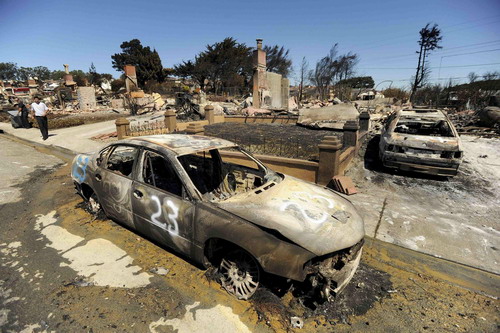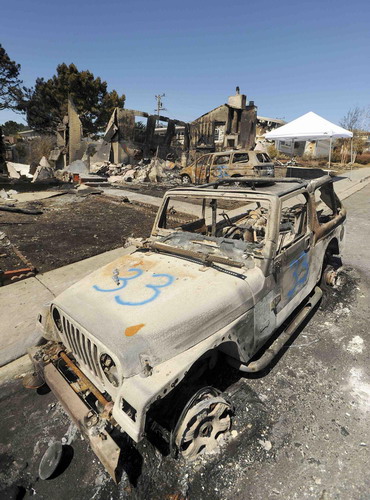-
News >World
Aging gas pipe at risk of explosion across US
2010-09-14 09:15Potential safety threats have grown as the pipeline network has expanded and age takes its toll on existing infrastructure. More than 60 percent of the nation's gas transmission lines are 40 years old or older.
Most of them are made of steel, with older varieties prone to corrosion. The more problematic pipes are made of cast-iron. A few places in Pennsylvania still had wooden gas pipes as of last year, according to officials there.
Pipelines in heavily populated locations like San Bruno fall into a category the industry refers to as "high consequence areas."
Those areas contain about 7 percent of the 300,000 miles of gas transmission lines in the country, or roughly 21,000 miles of pipeline. The category has nothing to do with the safety of pipelines, and was created to put the greatest emphasis on the most populous regions.
Industry watchdogs have criticized utilities for not being willing to spend the money necessary to avoid explosions like the one in California. The cost to replace lengthy stretches of pipelines can exceed $30 million.
"They (PG&E) will prioritize and put off work to maintain their level of earnings," said Bill Marcus, a California attorney whose firm consults nationally with consumer protection agencies and nonprofits on gas rate cases. "To some extent that's not bad, but it is concerning when those decisions endanger public health or the environment."
PG&E said it has spent more than $100 million to improve its gas system in recent years, and routinely surveys its 5,724 miles (9,211 kilometers) of transmission and 42,142 miles (67,817 kilometers) of distribution lines for leaks. The utility speeded up surveys of its distribution lines in 2008 and expects to have completed checks in December, it said.
PG&E President Chris Johns said the pipe that ruptured was inspected twice in the past year, once for corrosion and once for leaks, and the checks turned up no problems.
A section of pipe connected to the line that exploded was built in 1948, and flagged as a problem by PG&E in a memo. PG&E submitted paperwork to regulators that said the section was within "the top 100 highest risk line sections" in the utility's service territory, the documents show.
The fact that it's in a heavily populated area that didn't exist when the pipe was built is emblematic of a bigger problem nationwide, experts say.
Meanwhile on Monday, US Environmental Protection Agency officials said a leak from an oil pipeline outside Chicago had stopped.
WFLD-TV reported that a 1{-inch (2.54-centimeter) hole was found on the bottom of a 34-inch (86-centimeter) diameter pipe owned by Enbridge Energy Partners. Analysts said the leak caused a spike in gas prices across the region. Officials said repair of the pipe and cleanup are under way.
Enbridge also owns a pipeline that ruptured in Mighigan in July and leaked at least 800,000 gallons (3,028,240 liters) of oil into a waterway there.
Also on Monday, Rep. Maurice Hinchey told a federal hearing that the Environmental Protection Agency must regulate hydraulic fracturing, the natural gas extraction process that he said has contaminated water near drilling sites around the country.
The process, also known as fracking, blasts millions of gallons (liters) of water mixed with sand and chemicals, some of them carcinogens, deep into the earth to free gas from dense shale deposits. As a gas rush sweeps parts of the vast and lucrative Marcellus Shale region that underlies New York, Pennsylvania, Ohio and West Virginia, environmentalists are concerned for the watershed that provides drinking water for 17 million people from Philadelphia to New York City.
"There are numerous reports of water contamination related to hydraulic fracturing in states across the country," said Hinchey.


